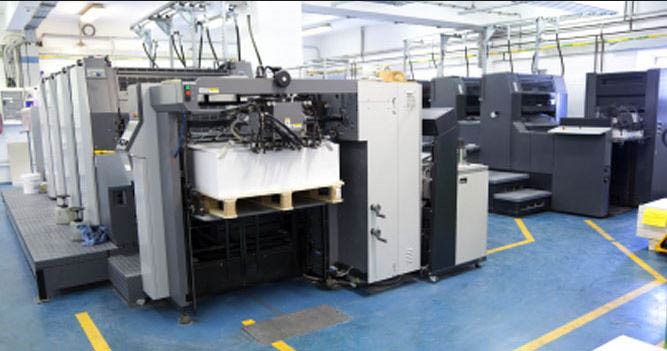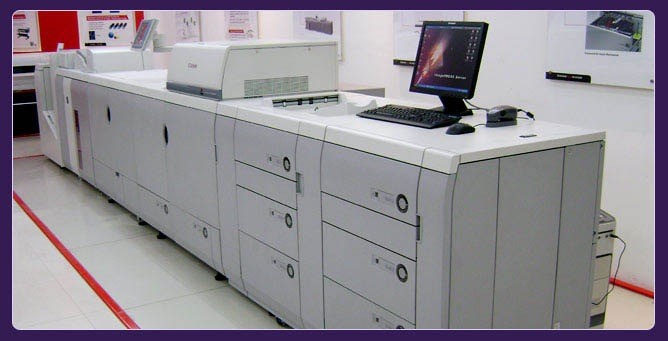THE DIFFERENCE BETWEEN DIGITAL PRINTING AND LITHOGRAPHIC PRINTING
Of course, there are pros and cons to using both methods, so I shall explain the main distinctions to give you a little guidance.
Of course, your main priority will be to seek out the most cost-effective and best quality printing technique to give your work the finish it deserves, but how do you decide whether to use digital or litho printing? Price is also often the main determining factor, but there is a lot more to consider than just cost alone. Depending on what kind of task you are undertaking, this will elect the type of printing finish to go for.
Lithographic printing

Also known as offset printing, or litho, this has been the most common type of commercial printing, and uses a four colour process.
The method that it uses is quite simple, as it separates your desired design across four different printing presses, printing a single colour each. These colours are known in the industry as ‘CMYK’, which are cyan, magenta, yellow and black. These four different colours are then combined to produce a full-colour print.
If you want to add a little something extra to your design, then it is possible to add additional plates for techniques such as printing spot colours or adding in speciality inks like fluorescent or sparkly metallics. However, if your design is very simple and only incorporates two colours, then you could also choose two-colour printing, in which only two plates would be used, speeding up the process and reducing the overall cost of your work.
Litho printing can be quite costly as you need to pay for the plates and the setting up of the machine for print. However for higher volume printing, the price per page can be reduced. Litho printing produces a high quality finish and is very fast and efficient. However it does require a much longer drying time, which needs to be factored into deadlines.
This type of printing is most commonly used for high volumes of printing.
Digital printing

Digital printing technology has evolved at a pretty rapid rate and can be differentiated from lithographic or offset printing in quite a few varying ways.
Digital printing works by reproducing digital images directly from an electronic file to a physical surface; this can be materials such as paper, plastic, canvas and cotton, as well as other materials. Every single impression that is completed by the digital printing press onto the paper can be different, as opposed to that of a lithographic printer which will make thousands of impressions of an identical image from one set of metal plates, as they would do traditionally.
Digital printing is the most efficient and effective solution if you are looking for a quick turnaround or for a small print run as there are no plates to make and less drying time.
Because there are both small and large format digital print presses, this means that you print everything from leaflet and flyers right up to posters and exhibition stands digitally, saving you valuable time and energy shopping around for different suppliers.
Unlike litho printing digitally printed items can also be easily personalised, for example tender documents presented in custom printed ring binders could have the project name/ clients logo and specific project images incorporated into the design, and can vary from folder to folder.
So, if you are looking to print small runs of outstanding quality reports, leaflets, marketing materials or large format display items, posters and exhibition materials, we have the digital solution for you. If you are still concerned about with method you should use for your project, please get in touch and we can advise you.